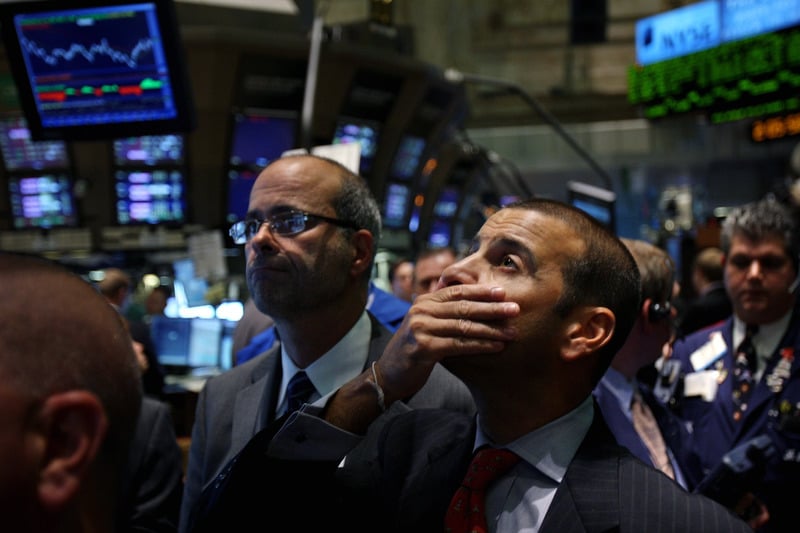Investing
During Massive Sell-Offs, Triple-Leverage ETFs Look Nuts With NYSE Circuit Breakers
Published:
Last Updated:
During market sell-offs, market crashes and periods of major uncertainty, stocks get battered and volatility rules. Then there is the other extreme in a correction — triple-leverage ETFs. It is this sector of triple-leverage exchange traded funds that become the most battered of all. Source: Photo by Spencer Platt/Getty Images
Source: Photo by Spencer Platt/Getty Images
To make matters worse, triple-leverage ETFs often do not trade with the fundamentals of the market. There are of course tracking errors to consider, where the ETFs do not follow the actual moves of the index. Another issue behind these ETFs is that market orders still get turned in rather than limit orders, and the bid-ask spreads are extremely wide during big market moves.
We already showed how bad things looked in China via ETFs here. This is just how some of the key triple-leverage ETFs were looking right at the open on Monday.
Direxion Daily Financial Bull 3X ETF (NYSEMKT: FAS) was down 14% at $25.15, after closing at $29.29, against a 52-week trading range of $20.93 to $35.73.
Direxion Daily Financial Bear 3X ETF (NYSEMKT: FAZ) was up 14.5% at $13.82, after closing at $12.07 and versus a 52-week range of $10.08 to $19.91.
ALSO READ: Merrill Lynch’s 3 Top Stocks to Buy Into Extreme Market Weakness
The UltraPro QQQ (NASDAQ: TQQQ) was down 14.6% at $78.51, versus a prior close of $91.92 and a 52-week range of $65.25 to $128.78.
The UltraPro Dow30 (NYSEMKT: UDOW) was down 18.8% at $45.15, versus a close of $55.69 and a 52-week range of $45.13 to $77.07.
The UltraPro S&P500 (NYSEMKT: UPRO) was down 20% at $44.70, versus a $57.91 close and a 52-week range of $43.77 to $73.66.
As a reminder about NYSE circuit breakers, direct from the NYSE:
Specifically, the circuit-breaker halt for a Level 1 (7%) or Level 2 (13%) decline occurring after 9:30 a.m. Eastern and up to and including 3:25 p.m. Eastern, or in the case of an early scheduled close, 12:25 p.m. Eastern, would result in a trading halt in all stocks for 15 minutes. If the market declined by 20%, triggering a Level 3 circuit-breaker, at any time, trading would be halted for the remainder of the day.
A Level 1 or Level 2 halt can only occur once per trading day. For example, if a Level 1 Market Decline was to occur and trading was halted, following the reopening of trading, the NYSE would not halt the market again unless a Level 2 Market Decline was to occur. Likewise, following the reopening of trading after a Level 2 Market Decline, the NYSE would not halt trading again unless a Level 3 Market Decline were to occur, at which point, trading in all stocks would be halted until the primary market opens the next trading day.
ALSO READ: Where Would Warren Buffett Put Money If Markets Collapse?
Want retirement to come a few years earlier than you’d planned? Or are you ready to retire now, but want an extra set of eyes on your finances?
Now you can speak with up to 3 financial experts in your area for FREE. By simply clicking here you can begin to match with financial professionals who can help you build your plan to retire early. And the best part? The first conversation with them is free.
Click here to match with up to 3 financial pros who would be excited to help you make financial decisions.
Thank you for reading! Have some feedback for us?
Contact the 24/7 Wall St. editorial team.